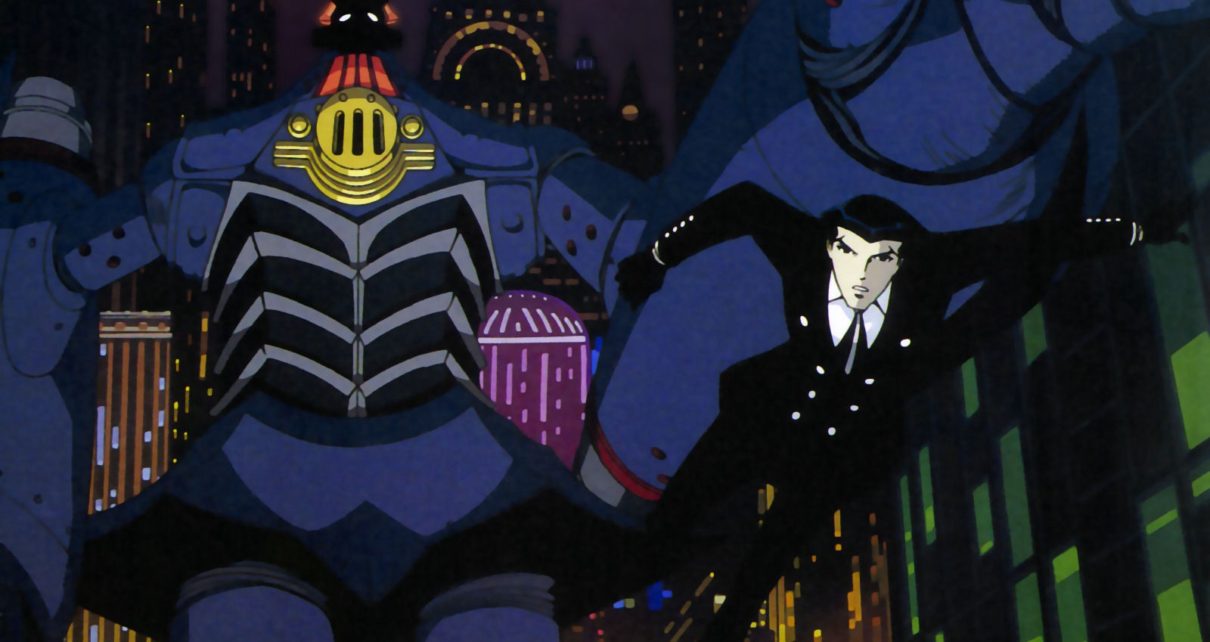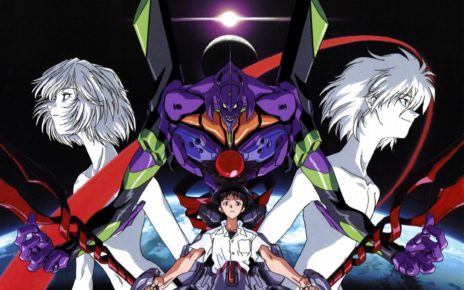The Big O is an anime that wears its inspiration on its sleeve: it’s a film noir series drenched in art deco stylings that manages to simultaneously question the nature of human existence while also answering that age-old question: What if Batman had a giant robot?
Big O hit American airwaves during the early 2000s, the heyday of Cartoon Network’s Toonami. Sandwiched between Dragonball Z and Cowboy Bebop, Big O took a different tack with both its storytelling and its aesthetics. It was styled after Batman: The Animated Series instead of traditional Japanese anime; the characters look like they could walk into Gotham City and be right at home.
That Gotham City style seeps into everything about the art direction of Big O. Art deco is everywhere — from protagonist Roger Smith’s Batmobile-like car to even the titular Big O itself.

Big O all takes place in and around Paradigm City, the remains of New York surrounded by a post-apocalyptic wasteland. In what is known only as The Event, everyone in the city lost their memories 40 years prior to the start of the show.
This loss of memory is central to the Big O’s theme. The show often asks what it is that makes us human—is it the culmination of experiences from our lives, or what we do here and now?
It also posits a similar question with R. Dorothy Wayneright, an android who comes to live with Roger Smith after the first episode and who, like Motoko Kusanagi of Ghost in the Shell, has a complicated existential relationship with her sense of self. (It’s unclear if putting “Wayne” right in her name is another Batman homage, but it certainly seems possible.)
The Big O can be heavy at times. And confusing. But that doesn’t stop it from being an amazing series. Its film noir sensibilities make it unlike many other animes. The sounds of forlorn saxophones fill the interstitial space as Roger Smith drives around his city. Bars are dark and full of smoke and piano music. Roger Smith does voiceovers for each case he takes, pulling the viewer in deeper.
Roger is a negotiator. It’s a vaguely-defined job that has him acting as a detective, go-between and more. Generally, it leads to him solving some mystery or another during the course of each episode. However, that aspect of the show usually ends when the robots show up.

Called “megadeuses,” the giant robots in Big O are unlike others in the mecha anime genre. These aren’t Gundams mass-produced in factories for war. The robots in the Big O look like they were sculpted by an art deco genius. They have large bodies and curves. And they’re big. The Big O stands 100 feet tall, dwarfing some of the buildings in Paradigm City. The ground shakes when these monsters walk, and they leave footprints in the asphalt.
Big O was so beloved by its fan base that it was one of the first examples of fans managing to get a show brought back from the dead. The show ended in 2000 on a cliffhanger, and there was nothing else coming. Fan demand (especially in America) got a second, and final, season for the show, which wrapped up the storyline and (kind of) answered the questions that were posed in the earlier episodes.
The Big O has a lot of big ideas crammed into just 26 episodes. What does it mean to be human? Can people ever change, or are they ruled by their past? There are, of course, no easy answers. But fortunately, The Big O makes the journey just as exciting as the destination.
Thanks for reading The Dot and Line, where we talk about animation of all kinds. Don’t forget to ❤ this article and follow us on Twitter and Facebook.





